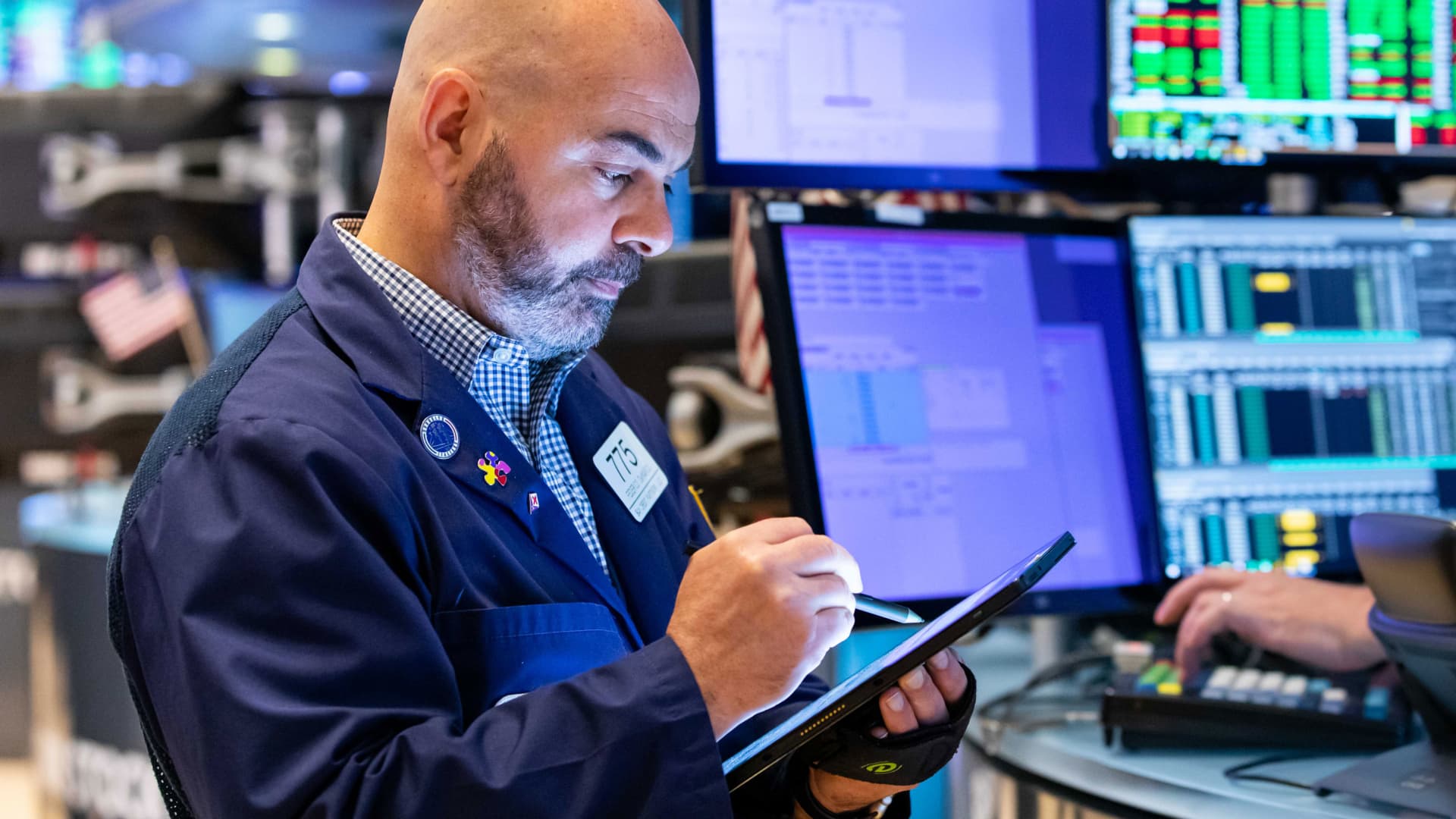Inflation figure that the Fed follows closely hits highest level since January 1982


An inflation gauge that the Federal Reserve uses as its primary barometer jumped to its highest 12-month gain in more than 40 years in June, the Bureau of Economic Analysis reported Friday.
The personal consumption expenditures price index rose 6.8%, the biggest 12-month move since the 6.9% increase in January 1982. The index rose 1% from May, tying its biggest monthly gain since February 1981.
Excluding food and energy, so-called core PCE increased 4.8% from a year ago, up one-tenth of a percentage point from May but off the recent high of 5.3% hit in February. On a monthly basis, core was up 0.6%, its biggest monthly gain since April 2021.
Both core readings were 0.1 percentage point above the Dow Jones estimates.
Fed officials generally focus on core inflation, but have turned their attention recently to the headline numbers as well, as food and fuel prices have soared in 2022.
The BEA release also showed that personal consumption expenditures, a gauge of consumer spending, increased 1.1% for the month, above the 0.9% estimate and owing largely to the surge in prices. Real spending adjusted for inflation increased just 0.1% as consumers barely kept up with inflation. Personal income rose 0.6%, topping the 0.5% estimate, but disposable income adjusted for inflation fell 0.3%.
Earlier this month, data showed the consumer price index rose 9.1% from a year ago, the biggest gain since November 1981. The Fed prefers PCE over CPI as a broader measure of inflation pressures. CPI indicates the change in the out-of-pocket expenditures of urban households, while the PCE index measures the price change in goods and services consumed by all households, as well as nonprofit institutions serving households.
There was other bad inflation news Thursday.
The employment cost index, another figure Fed policymakers follow closely, rose 1.3% in the second quarter. That represented a slight decline from the 1.4% gain in the previous quarter, but was ahead of the 1.1% estimate. Further, the 5.1% increase on a 12-month basis marked a record for a data series that goes back to the first quarter of 2002.
“The rest of the economy might be slowing down, but wages are speeding up,” said Nick Bunker, economic research director at job placement site Indeed. “Competition for workers remains fierce as employers have to keep bidding up wages for new hires. These red-hot wage growth statistics may fade in the near term, but there’s a long way for them to drop.”
The Fed has been using a recipe of rate increases and a reduction in asset holdings to bring down prices that have soared to their highest levels since the Reagan administration and have helped cool consumer spending.
Private sector wage gains of 1.6% for the quarter are “seriously disappointing” for the Fed, said Ian Shepherdson, chief economist at Pantheon Macroeconomics.
The Fed follows the ECI figures because they adjust for compositional effects, or imbalances between gains from higher- and lower-wage workers, as well as other factors.
“Wage gains at this pace are far too high for the Fed, because they would require implausible rapid productivity growth in order to be consistent with the inflation target in the medium-term,” Shepherdson wrote.
Fed officials earlier this week approved a second consecutive 0.75 percentage point increase in the central bank’s benchmark interest rate. Inflation by any measure has been running well above the Fed’s 2% longer-run target, and Chairman Jerome Powell said the central bank is “strongly committed” to bringing inflation down.
In normal times, the Fed focuses on inflation excluding food and energy costs because they are so volatile and don’t always reflect longer-run trends. But Powell acknowledged Wednesday that policymakers need to be attentive to both types of inflation in the current environment.
“Core inflation is a better predictor of inflation going forward, headline inflation tends to be volatile. So, in ordinary times, you look through volatile moves in commodities,” he said. “The problem with the current situation is that if you have a sustained period of supply shocks, those can actually start to undermine or to work on de-anchoring inflation expectations. The public doesn’t distinguish between core and headline inflation in their thinking.”
Markets expect the Fed to raise rates by another half percentage point in September, according to the CME Group’s FedWatch tracker. However, the probability for a bigger three-quarter-point hike rose Friday morning to 38%.
This post has been syndicated from a third-party source. View the original article here.




